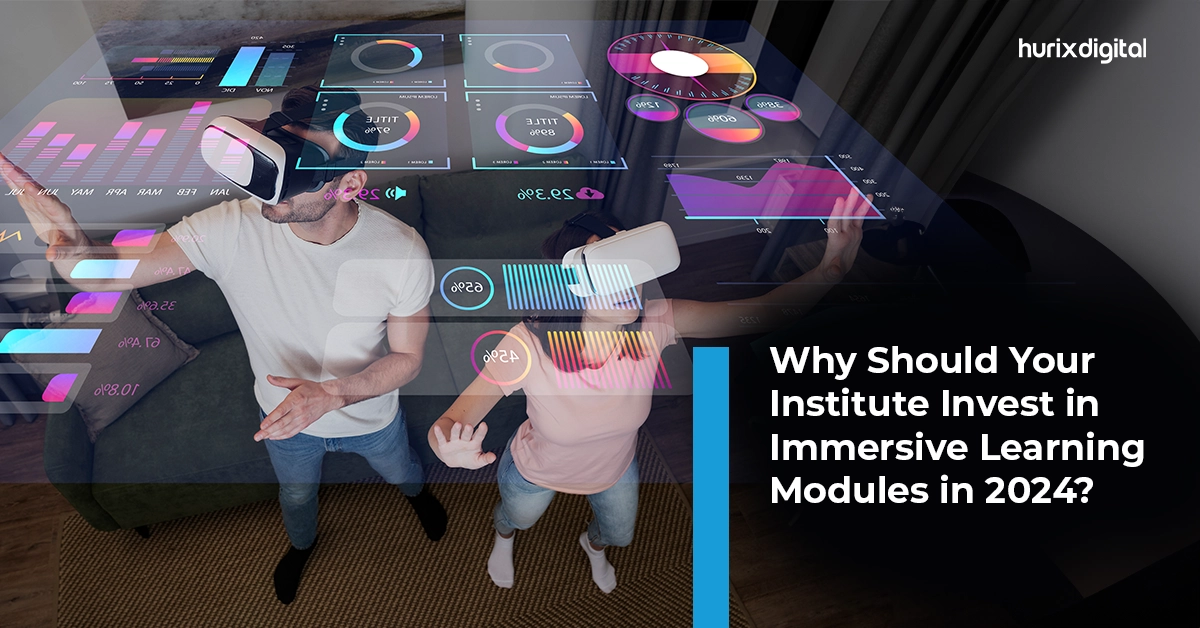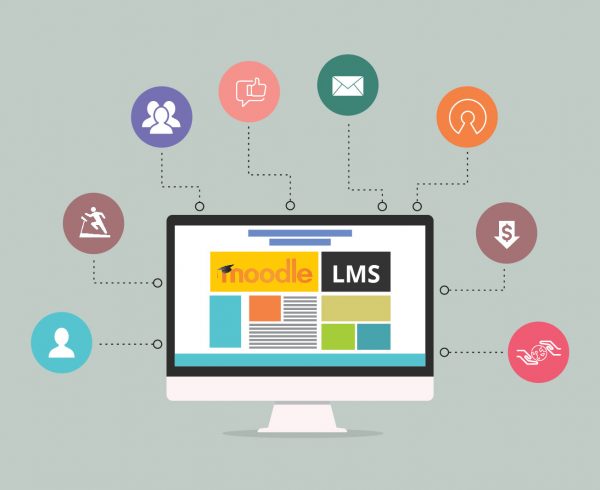Summary
This blog explores the benefits of immersive learning in 2024. It provided a brief introduction to what immersive learning is and how it can be used in the classroom. It also highlighted the six reasons why schools, colleges, and universities should consider adopting this transformative approach to education.
The realm of modern education has been significantly reshaped by technological advancements, leaving no aspect of teaching and learning untouched. Among these advancements, the integration of immersive learning modules into classrooms stands out.
To create a more dynamic and engaged learning environment, immersive tools are certain to completely change the way that educational technology (EdTech) is used in the classroom.
Immersive learning technologies like virtual reality (VR), augmented reality (AR), and 360-degree videos are becoming more popular by the day, providing teachers with effective resources to enhance their students’ learning journeys.
According to Statista, the Metaverse Education market will grow at a compound annual growth rate (CAGR) of 43.76% between 2023 and 2030, resulting in a projected market volume of 24.7 billion US dollars by 2030. This statistic underlines the growing recognition of the potential impact of immersive learning on education.
In this blog, we’ll explore a few key reasons why schools, colleges, and universities should consider embracing this transformative approach to education. But let’s first grasp the essence of what immersive learning is all about.
Table of Contents:
What is Immersive Learning?
Immersive learning involves the integration of the physical world with a simulated or digital realm, enabling users to access content in any direction. The two predominant immersive technologies are virtual reality (VR) and augmented reality (AR).
In the world of VR, simulations empower students to conduct experiments in a risk-free environment, making education engaging and unique. On the flip side, augmented reality (AR) superimposes digital information onto the real world, creating a harmonious blend of the virtual and physical.
Taking a hands-on learning approach, immersive technologies not only boost overall comprehension but also actively nurture critical thinking and problem-solving skills.
Also Read: Navigating Education: Exploring Immersive Learning vs. Blended Learning
Six Reasons to Invest in Immersive Learning Modules
Immersive learning incorporates visual, kinesthetic, and aural or auditory learning into the traditional disciplines. Integrating immersive learning modules into traditional classroom teaching can offer numerous benefits, including learner engagement and improved knowledge retention, to name a few.
Let’s look at some of the major points of impact, exploring the benefits of immersive learning in classroom education in detail.
1. Experiential Learning
Humans learn best through self-directed and experiential learning. Our understanding deepens when we engage in active participation and experimentation. This vibrant departure from the monotonous listening of subject matter presentations or completing assignments in a traditional homework style transforms learning into an adventure.
Immersive learning emerges as one of the most effective strategies to integrate a learning-by-doing approach into curriculum programs.
For instance, numerous Learning and Development (L&D) teams incorporating Virtual Reality (VR) into their training programs create simulations guiding learners through specific events, allowing them to make decisions and explore different outcomes.
Whether customized or ready-to-use, interactive simulations empower students to learn by doing rather than by passive observation. If mistakes occur, students can repeat the simulation until they achieve the desired outcome, ensuring a comprehensive understanding of the concepts.
2. Improved Engagement and Collaboration
Maintaining student involvement in traditional classrooms can be difficult, especially in this day and age when attention spans are getting shorter. This problem is addressed by immersive learning modules, which provide an engaging and collaborative learning environment.
For example, students can explore historical sites, ecosystems, or even space without ever leaving their computers thanks to virtual field trips.
VR and AR technologies enable learners to collaborate and engage with peers and teachers through immersive virtual meetings, interactive brainstorming sessions, and shared virtual workspaces. Virtual avatars and non-verbal cues in immersive VR further enhance communication, creating lifelike interactions that simulate face-to-face experiences.
Lastly, the integration of gamification elements like points, rewards, and leaderboards into the VR environment encourages individuals to get involved, collaborate, and share ideas.
3. Insightful Learning Data
Metrics in VR learning, covering progress, repetition, training time, and even eye and body movement, offer instructors a comprehensive toolset to evaluate each learner and offer personalized feedback. Furthermore, instructors can identify patterns in learning data and use them to change their curriculum to achieve better long-term results.
In the world of VR, learning data can be collected in real-time. This detailed information is often challenging for instructors to gather in traditional classroom or e-learning settings due to time and resource constraints.
Hence, immersive technology emerges as a compelling choice for institutions seeking more efficient ways to gauge the effectiveness of their learning programs.
4. Personalized Learning
Given its rising popularity, personalized learning experiences will be one of the most prominent learning trends in 2024.
What makes immersive learning tech stand out is its ability to be tailored to individual student needs, interests, and learning styles. Adaptive immersive learning modules powered by AR/VR technologies can assess a student’s progress in real-time.
Using this data, they dynamically adjust the difficulty level or pace of the learning module and even provide tailored feedback to address a student’s specific learning needs.
Consider, for example, a language learning application employing AR to create immersive scenarios where students engage with virtual native speakers, refining their language skills within a realistic context. Likewise, VR simulations can cater to diverse skill levels in subjects like mathematics or chemistry, enabling students to advance at their own pace.
5. Better Memory Retention
Typically, individuals are less likely to form strong memory connections when simply reading or hearing about something compared to actively experiencing it. That’s where immersive learning steps in, offering a deeper understanding.
Think about it like having a front-row seat to different angles and perspectives. When you get hands-on experience, touch, move stuff around, and dig into how things work, it’s like making memories that come pretty close to the real deal.
According to recent research, VR learning demonstrated a retention rate of 75%, significantly surpassing the rates observed in lecture-style learning (5%) and reading (10%).
6. Develop emotional and Human Connection
Immersive educational technologies, such as VR, play a crucial role in re-establishing the emotional and human connections often absent in traditional classroom learning and e-learning.
VR learners exhibit a 3.75 times greater emotional connection to the learning content compared to their classroom-style counterparts, primarily due to the immersive and meaningful experiences offered through simulation-based learning.
In the virtual realm, group training sessions promote connection and collaboration among team members, even if they are scattered globally.
In contrast, video conferencing tools and other 2D mediums often fall short of providing this spatial and emotional connection.
Also Read: Unlocking the Power of Immersive Learning: Practical Strategies for Educators
Summing Up
With immersive technologies becoming more affordable and effective every day, they are now moving from niche to mainstream. As we enter 2024, the widespread adoption of these technologies will reshape the educational landscape, ushering in an era where hands-on, personalized learning experiences are not just the future but a present-day reality.
Educational institutions that invest in immersive learning will be well-positioned to provide their students with dynamic, engaging, and highly effective learning environments, preparing them for the challenges and opportunities of the interconnected world.
Learn more about immersive learning technologies and how Hurix Digital’s adaptive Higher Education and K-12 Content Solutions can help you create the perfect learning environment for your students to enhance their knowledge and understanding.
Contact us today to embark on a transformative, immersive learning journey!











